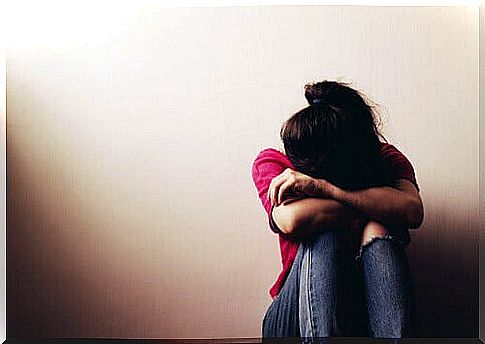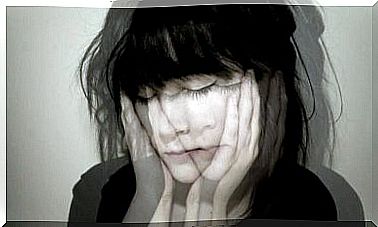Experiential Avoidance Disorder

The classification of psychological disorders and related therapeutic approaches is currently changing and evolving. A third generation therapy, Acceptance and Commitment Therapy, explains that much of the psychological suffering is the final consequence of experiential avoidance disorder.
Experiential avoidance disorder can be exemplified in a simple way. A situation that facilitates its appearance is a situation that is seen as undesirable by the person suffering from this disorder, who, in order not to find it, will try to avoid it or escape from it.
In this sense, it is good to specify that not wanting to get in touch with the malaise or run away from it instead of accepting it, is not a disturbance ; rather it is a normal response that is observed in all animals, human and otherwise. The disorder occurs when rigid thoughts appear such as “I have to be fine to be able to do anything”, “I have to be happy to be able to go back to work”, “I can’t stand being nervous, this situation must end immediately”, a source of discomfort that does not gives respite.
How to know if we suffer from experiential avoidance disorder?
The diagnostic criteria for experiential avoidance disorder are:
- Being continually overwhelmed by thoughts and feelings about “feeling bad”, “being sad” or “struggling to feel good”.
- The mind operates a constant bombardment of thoughts aimed at fighting any kind of malaise, uncertainty or doubt.
- Devote a large part of the day to controlling these thoughts or feelings.
- Everyday life revolves around having to “eliminate discomfort” as a prerequisite for recovering one’s life. You get the feeling that you can’t do anything, not even keep growing, until these thoughts are gone.
- Wait until you feel good to return to activities that are considered important (for example, going to the park with the children, meeting friends, taking a walk on the beach).

What are the causes of experiential avoidance disorder?
Experiential avoidance originates from psychological inflexibility towards managing the malaise, whether it is avoided or escaped from it. This lack of acceptance causes experiential avoidance disorder, causing the person’s life to revolve around avoiding painful feelings or thoughts.
Psychological inflexibility occurs when a person withdraws from thoughts, emotions, or memories that cause them pain. Consequently, she does not have the flexibility to be able to continue carrying out daily activities that cause her well-being despite the fact that there may be one or more sources of discomfort. The rigid idea is undermined that “feeling good” is the necessary prerequisite for enjoying any type of activity or task.
When a person has a psychological problem, such as anxiety or depression, this inflexibility greatly worsens their situation. Not accepting the malaise that anxiety or depression bring with them and trying to eliminate it in order to return to life has two consequences:
- Being at the mercy of the malaise and trying to control it only has the effect of increasing it. Remember that the mind never stops thinking, it can be seen as a boiler that never runs out of fuel. If we try to stop thinking about sadness or anxiety, the mind will use these thoughts even more as fuel.
- Turning everyday life into a fight against malaise impoverishes the amount of reinforcements or rewards we can “aspire to”. We end up carrying out an ever smaller number of activities that increase well-being, we neglect interpersonal relationships and we isolate ourselves within the malaise.
The trap of “feeling good”
We live in a society that promotes well-being, enjoyment, keeping away from suffering as much as possible. Crying, being sad and feeling anxious have been and are not frowned upon, so when we experience these feelings or emotions, we struggle hard against them.
If “feeling good” becomes the key and central element of our life, we fall into its own trap. Because it is the search for perfect well-being that keeps us on the alert, identifying negative emotions with our radar that are, however, normal and adaptive.
In other words, by constantly checking whether we are good or bad, we will end up identifying any unpleasant psychological experience, even the slightest, and to exaggerate its weight. So in order to remove these negative psychological experiences (thoughts and emotions) all we get is to make them stronger.

Consequences of Experiential Avoidance Disorder
Socially, the consequences of experiential avoidance disorder are very important. He expects to be fine to go to the movies, see friends, resume his studies, have a date and many other things. A lot of habits develop that aim to avoid unpleasant psychological experiences. And so, as the months and years go by, life revolves around avoidance.
We can become real experts in what we don’t want, defining our desires and aspirations through the absence of what we want to avoid. Our identity and projection of the future are always very poor.
On a psychological level, experiential avoidance worsens the symptoms associated with malaise and impoverishes the emotional life of the individual. It is for this reason that the Acceptance and Commitment Therapy (developed to overcome experiential avoidance disorder) is oriented towards the acceptance of malaise by establishing goals related to personal values.
Treatment of experiential avoidance disorder
The solution to this disorder must be sought above all in the acceptance, in the unconditional and non-judgmental observation of psychological experiences, such as thoughts, emotions and feelings. To achieve this, acceptance and commitment therapy uses various strategies such as mindfulness, cognitive defusion and therapeutic metaphors.
Second, the treatment of experiential avoidance focuses on restoring the importance of personal values in the face of the emotions and impulsive behaviors of the moment. The connotation of “commitment” derives from this therapeutic approach. This means that we work to ensure that the person makes a commitment to his values, regardless of what happens. Trying to abandon the fight against malaise to focus on a struggle to fill life with activities that have value for the self .

Fighting this ailment is a tall order and requires a difficult path. However, it is necessary to be able to free oneself from the traps of thought and rigid beliefs that, by aiming for being well, lead to being worse and worse. Orienting one’s life towards personal values, accepting the discomfort it brings with it, will make us feel more free and happy.









